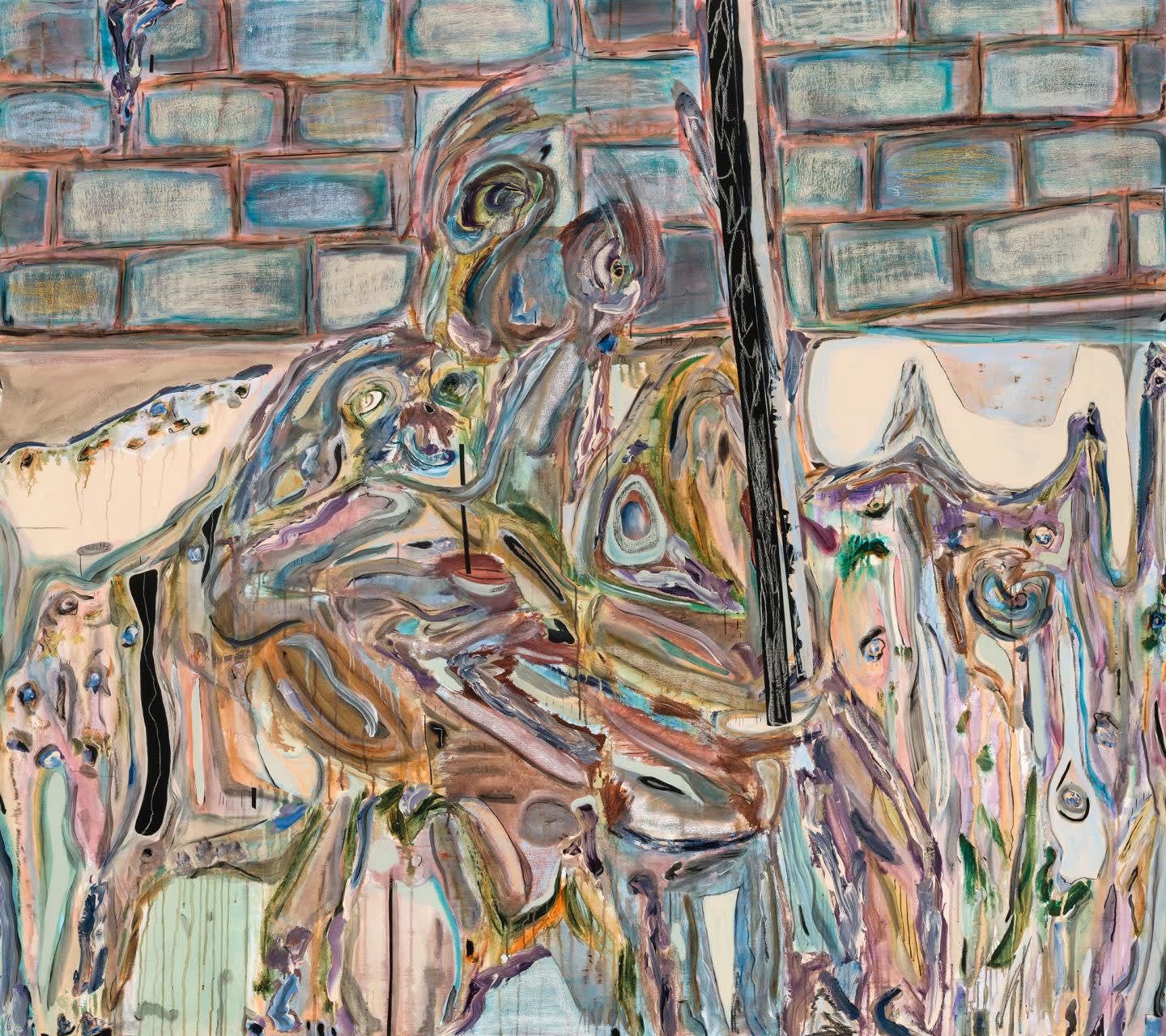At the Montreal Museum of Fine Arts, the artist moves between colourful figuration and abstraction to capture the experiences of trauma, loss and hope
By James B. Campell for Frieze
The compelling array of recent works by Haitian-born artist Manuel Mathieu, currently on show at the Montreal Museum of Fine Arts, demonstrates just how much is still possible in painting at a time when the wider culture seems to be in the grip of pervasive, paralytic darkness. Mathieu’s first solo museum show in North America, ‘Survivance’ (Survival), brings together 20 paintings and a newly commissioned, site-specific installation. Mathieu, who won Canada’s prestigious Sobey Art Award in 2020, is a maverick and empath whose work feeds deeply on his own lived experiences, including two serious traffic accidents he suffered in London and Montreal, which prompted him to reflect on and develop his artistic vision.
This attention to the torrid history of violence in Haiti surfaces in works such as The Gardener/Mané (2019) and 38 (2018), colourful abstractions that veer toward illusory renderings of disembodied figures in vibrant flesh tones reminiscent of Eldzier Cortor’s ‘Abattoir’ (c.1955) – a series inspired, coincidentally, by Cortor’s own years in Haiti. Other works, such as Solitude (2018) and The Redemption (2020) – soft lozenges of pale colour brilliantly pulled together with chromatic fervour in an assortment of media – are suggestive of inner states. The subset of drawn and daubed forms in the paintings offers a pictographic backstory to the proceedings, tiny integers of a painter’s faith. Mathieu has a knack for uniting his disparate marks in a wider framework in which the abstract and figurative interact in collegial, if feisty, fashion. Francis Bacon’s figural abstraction casts a shadow here, as does the work of Clyfford Still. The site-specific installation Ouroboros (2020) – comprising a literal tunnel through 15 suspended panels of scorched canvas – invites an imaginative walkthrough that might be interpreted as a spiritual trial or baptism by fire.
Mathieu later became interested in the impact of the Duvalier dynasty dictatorships (1957–86) in his native Haiti. François ‘Papa Doc’ Duvalier’s paramilitary group, the dreaded Tonton Macoute, instilled a culture of fear in the wider population, killing any of the president’s opponents. Upon his death in 1971, he was succeeded by his son, Jean-Claude ‘Baby Doc’ Duvalier. Mathieu’s maternal grandfather was a colonel in the latter’s brutal regime, while members of his father’s family were executed by the same government. Thousands upon thousands of innocent Haitians were murdered or maimed, and countless more fled the country during his presidency.
The title of the exhibition takes a salutary cue from French philosopher and art historian Georges Didi-Huberman’s Survivance des lucioles (Survival of the Fireflies, 2009), a book that made a profound impression on Mathieu. ‘Have the fireflies disappeared?’ asks Didi-Huberman, before replying: ‘Of course not. Some of them are near us. They brush past us in the dark; others have passed over the horizon, trying to reform elsewhere their community, their minority, their shared desire.’ He is referring, of course, to the ambulatory spirits of the dead whose voices have not been silenced. Similarly, Mathieu’s exhibition is like a piercing ray of light through the dark; a powerful act of memorialization that reifies the fireflies as symbols of hope and regeneration. ‘Survivance’ is all about overcoming adversity: strikingly timely, even pressing, in tenor and scope, these works, replete with their painterly licks and emblems of mourning, offer us all the promise of transcendence.
Manuel Mathieu's 'Survivance' is on view at the Montreal Museum of Fine Arts through 28 March 2021.



